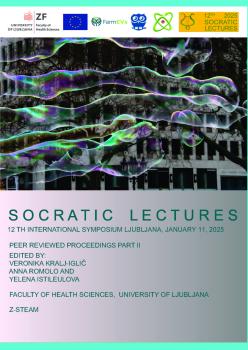Quantitative Determination of Total Phenolic Compounds in Plant Extracts Using Supercritical Carbon Dioxide and Water-ethanol mixture
Kratka vsebina
Natural products serve as an important source of bioactive compounds with significant applications in various fields of science. Among these, polyphenols are particularly noteworthy due to their antimicrobial and antioxidant properties and role in capturing free radicals. This study quantitatively determined the total phenolic content in plant extracts prepared using two distinct extraction methods: supercritical carbon dioxide (SC-CO₂) and water-ethanol maceration. The Folin-Ciocalteu method was employed for quantitative analysis, with results expressed as gallic acid equivalents per kilogram of plant material. The findings demonstrated that water-ethanol extracts consistently contained higher levels of phenolic compounds compared to SC-CO₂ extracts across all analyzed samples. For instance, rosemary extracts prepared with water-ethanol had the highest phenolic content, while thyme and marigold showed lower values. In contrast, SC-CO₂ extracts yielded significantly lower phenolic concentrations, likely due to the selective extraction of lipophilic compounds. Variations in phenolic content were attributed to factors such as sample polarity, plant type, and environmental conditions. These results highlight the importance of selecting appropriate extraction methods based on the desired application. Water-ethanol maceration proved superior for obtaining extracts rich in phenolic compounds, making it suitable for applications requiring high antioxidant activity. This study underscores the potential of plantderived polyphenols as natural, "green" bioactive ingredients for diverse scientific and therapeutic purposes.
Prenosi
Pages
Najavljeno
Kategorije
Licenca

To delo je licencirano pod Creative Commons Priznanje avtorstva-Deljenje pod enakimi pogoji 4.0 mednarodno licenco.


